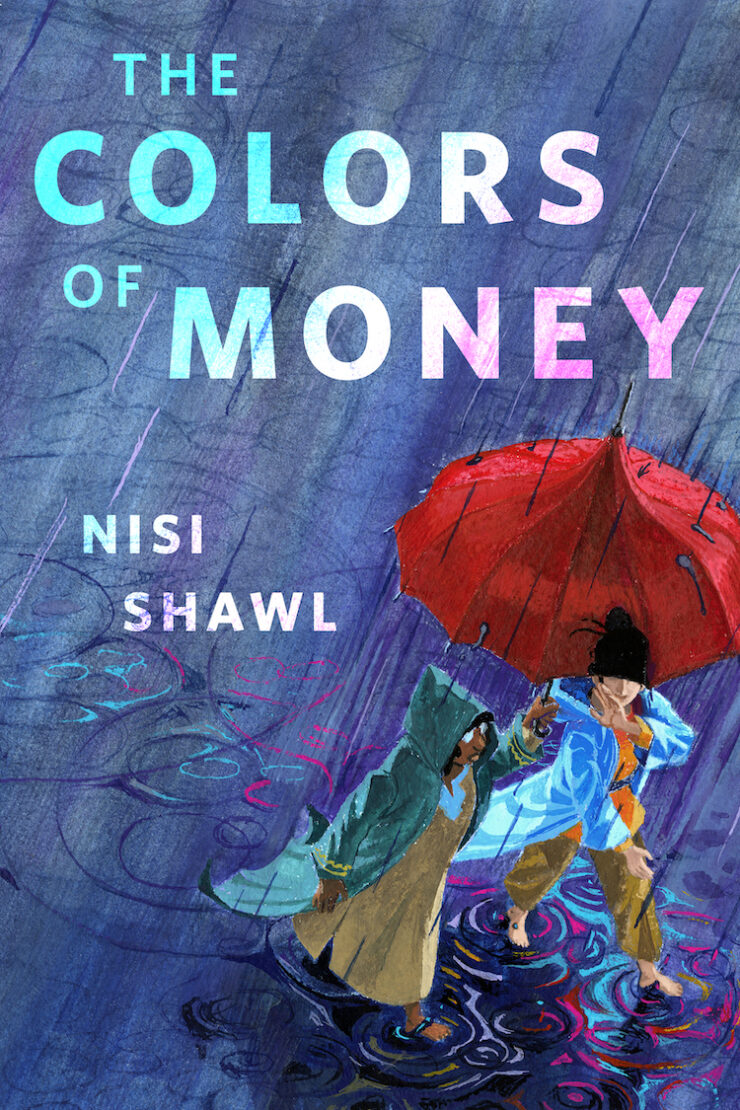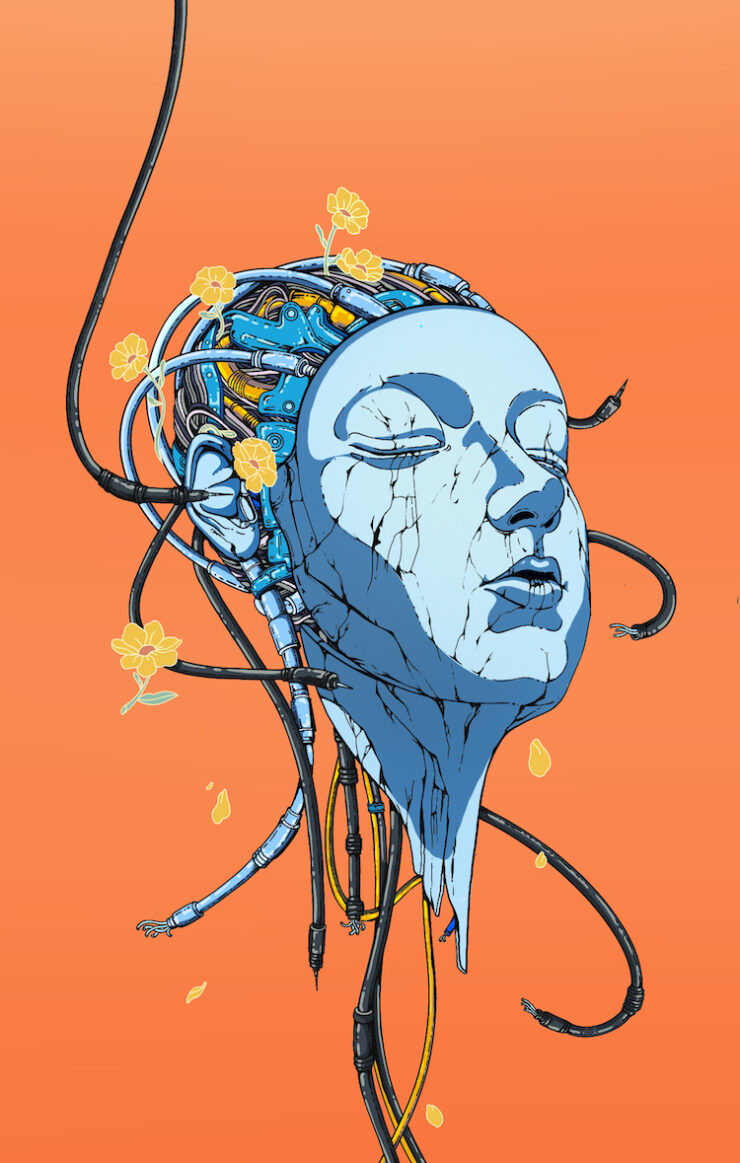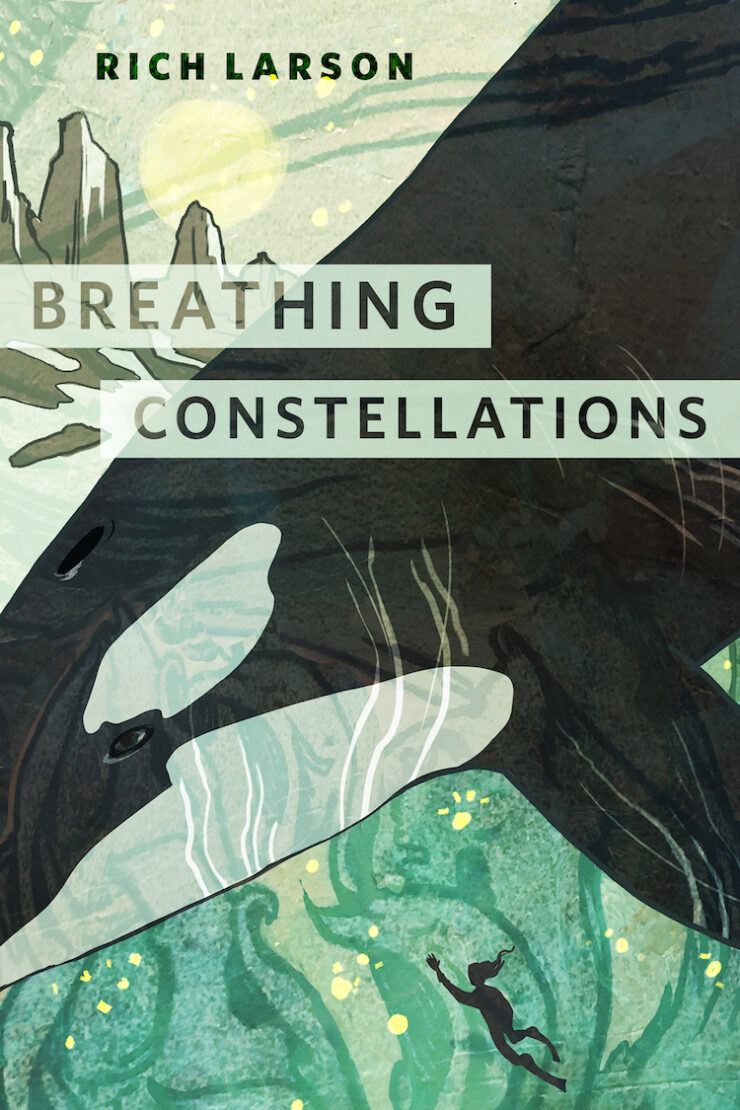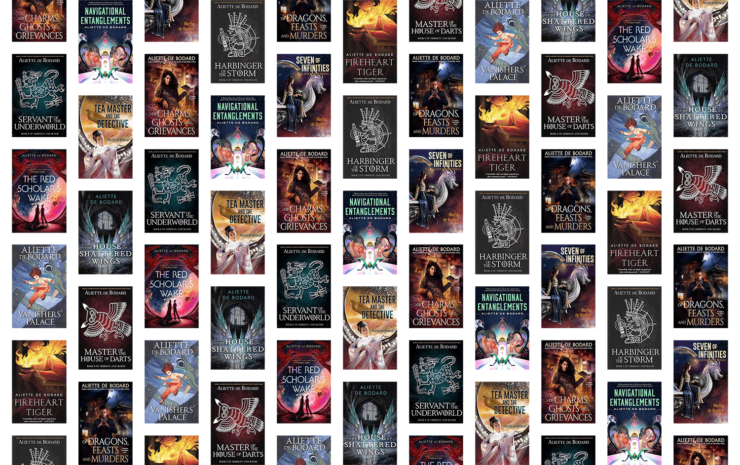Apart from being one of the most inventive and interesting science fiction writers working, Aliette de Bodard also represents a stirring testament to the power and importance of SFF’s short fiction ecosystem. Her short stories and novellas have been published across a dizzying number of outlets, establishing universes of long standing whose development can be traced across decades. In her long-form work, she writes a lot of speculative murder mysteries that thoughtfully explore gradations of power, institutional failures, and the individual’s ability to make space for ethical choices within corrupt and corrupting systems.
With the new novella Navigational Entanglements out later this month, it felt like the right moment to offer an intro to the rich SFF worlds of this fantastic author. Whether you’re new to her work or have been following her for years, there’s always something new to try!
Standalones
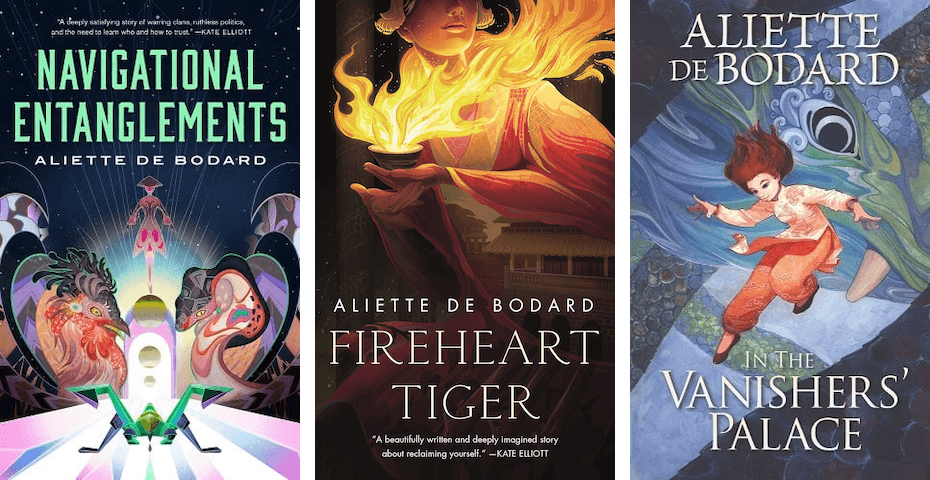
If you’re not sure you want to commit to a whole new world, there are some terrific standalone works to check out. The latest novella, Navigational Entanglements, is a standalone, wuxia-inspired, science fiction team-up murder mystery; and it was so fun and such a great time that I’m secretly hoping it ends up not being standalone but instead becomes part of a long-running series. Can you hear me, publishers? More of these, please!
From the backlist, there’s plenty to love. Fireheart Tiger asks the reader to confront the lines between romance and obsession, conflict and abuse. My current favorite of the standalones is still In the Vanishers’ Palace, which is pretty unique among Beauty and the Beast retellings for its willingness to grapple with the problems of power that permeate that story. So that’s probably the one I’d put into the hands of a de Bodard newbie. (Navigational Entanglements is really nipping at its heels, however.)
Xuya Universe
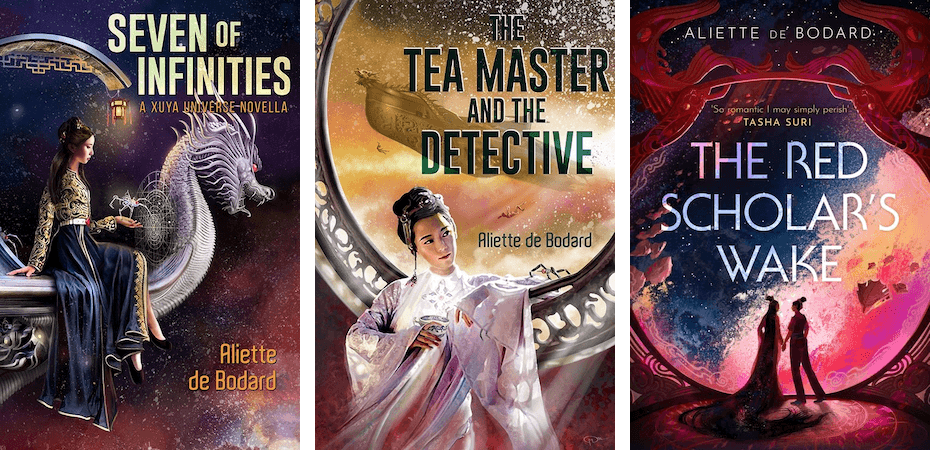
If you are me, the backstory you need on the Xuya universe is “some ships are people.” I love a nonhuman protagonist, and Aliette de Bodard doesn’t flinch away from the logistical weirdnesses of embodiment and the myriad of ways human-people interact with ship-people. The amount of explanation provided in any given Xuya story, novella, or novel varies widely, but you don’t really need to understand the logistics in order to enjoy the stories. Yes, the ships can have sex. Yes, the ships can be the biological children of humans. Don’t worry about it!
If you are my dear friend Whiskey Jenny, you may be constitutionally incapable of not worrying about it. This is where de Bodard has proved herself a true friend to the people. Her website contains a lengthy backstory for the Xuya universe that traces the world back to its original points of diversion from our real world’s history (China, not Europe, made first contact with the Americas and their people). There’s also a timeline of major world events, which pegs the various stories to the point in history.
The Xuya universe is particularly fun because lots of room remains to explore different types of stories and futures that exist in various pockets of the Xuya world. For instance, the short story “Immersion” takes place in a very different bit of the universe than some of the stuff I’ll be recommending, which means that you get the chance to see other future societies, structured differently, with different concerns and different relationships to Earth’s countries. Part of the fun of this world is its expansiveness, and de Bodard makes full use of the vastness of space.
Where to start (short-form): I’d recommend the novella The Tea Master and the Detective. The Sherlockian undertones and the mystery structure give this one a familiar net to catch you as you plunge into a highly unfamiliar world. It’s a good read, it’s a quick read, and it’ll give you a strong enough foundation with the worldbuilding to start having fun with the novels, novellas, and shorts that dabble in all sorts of subgenres and all corners of this universe.
Where to start (long-form): Like many of Aliette de Bodard’s books, The Red Scholar’s Wake includes a murder mystery, but it’s primarily a romance between a pirate mindship called Rice Fish and a bot maker and scavenger called Xích Si. The Red Scholar’s Wake explores grief, mothering, political machinations, and how to find the lesser of an array of possible evils. If you’re curious about the logistics of mindships, this is also a great book for its exploration of the many ways a mindship can interface with humans, on terms of enmity as well as intimacy. A very good read.
Read these if: You revel in worldbuilding. You don’t want to spend a ton of time with any one character. You would hop on a generation ship tomorrow if somebody offered you a seat on one.
Dominion of the Fallen
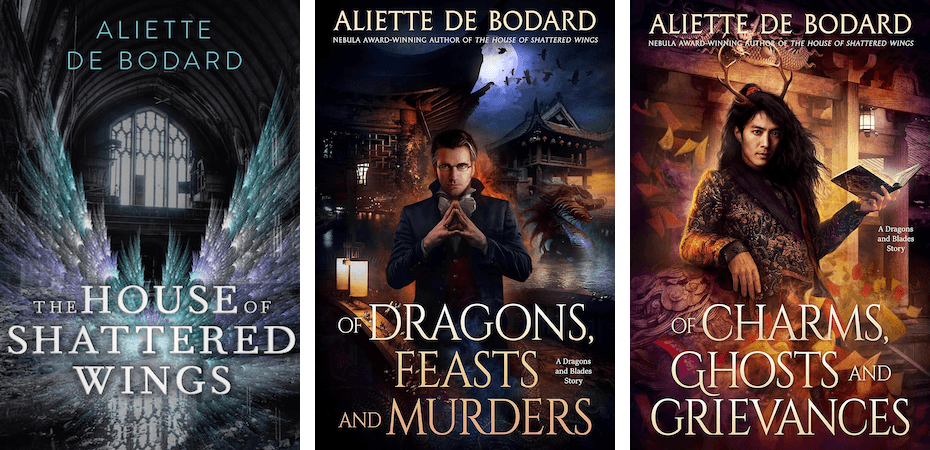
Paris lies in ruins after a massive war among the Great Houses that have long governed the city. House Silverspires, created by Lucifer Morningstar (you’ve heard of him!) and once the most powerful Great House in the city, lies in particular disarray, as Morningstar has been missing for decades. Fallen angels, alchemists, dragons, and witches vie for power, form fragile and ever-shifting alliances, and strive to prevent the total destruction of their Houses and their lives.
Where to start (short-form): Oh, God, I want to say that you should start with the two “Dragons and Blades” novellas (Of Dragons, Feasts, and Murders and Of Charms, Ghosts, and Grievances), because they are so fun. Only, I fear that will do you a disservice, because there’s a pleasure in getting to know its protagonists gradually as you read through the main trilogy. My advice for this section is, therefore, twofold. If the main premise of this series sounds like something you would enjoy, try “Court of Birth, Court of Strength” (online here), wherein Asmodeus is asked for help. It’ll give you a good sense of the trilogy’s vibes and rules of engagement. If the main series doesn’t quite sound like your thing, for whatever reason, then start with Of Dragons, Feasts, and Murders. It’s just a really good time!
Where to start (long-form): Unlike most of de Bodard’s work, the main trilogy for this series really benefits by being read in order. The events of each book stand well on their own, but there’s character development and an expanding of the cast that just works better when you get to watch it grow. The first novel is The House of Shattered Wings, which tees up some of the major players for the trilogy and, crucially, introduces us to the fearsome Asmodeus. If for some reason you can’t get the books in order, de Bodard has—again with great kindness for the pitiful Jello brains of readers like me—written out guides to each of the first two books.
Read these if: You think that Milton was of the devil’s party. You have watched more than five seasons of Supernatural. You like a good catacomb.
Obsidian and Blood
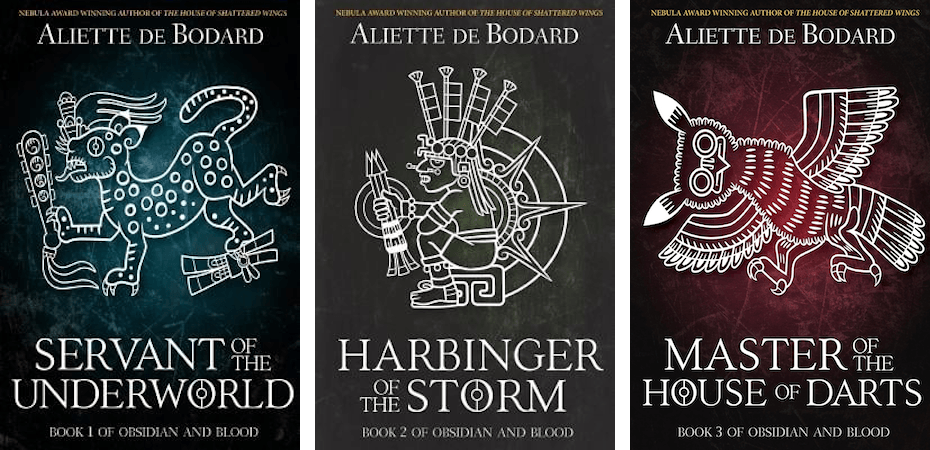
The Obsidian and Blood series follows the investigations of Acatl, a priest for the Dead in the Aztec (here called Mexica) city of Tenochtitlan. Any time there is a death in the city that seems to implicate the gods or the powers of the underworld, it’s Acatl’s responsibility to investigate, find out the truth, and propitiate the dark powers. These historical fantasies bring the Aztec Empire to vivid life, placing quotidian human dramas at the heart of epic political and religious struggle. The way to make a murder mystery hurt is to ensure that solving it brings more pain than leaving it alone would have. Acatl may wish to sidestep the burden of responsibility for telling the truth; but his strong moral compass and commitment to his god ensure that he never can.
Where to start (short-form): Three short stories precede the trilogy of novels, and all of them are available to read on de Bodard’s website, where she’s also helpfully laid out the reading order. Of those, my favorite is “Safe, Child, Safe,” because it has a spooky child, a hairpin shift in sympathy, and a final line of dialogue from Acatl that’s absolutely killer.
Where to start (long-form): Anywhere! These books are in many ways a classic murder mystery series, meaning that each of them is its own self-contained story. I advise starting with whichever book’s plot description sounds most appealing to you. My personal choice is Harbinger of the Storm, because it’s the most political machinations–forward, and I like political machinations; but there’s no bad choice to be made here.
Read these if: You read your D’Aulaire’s to shreds as a kid and wished they had illustrated one for every place in the world.


